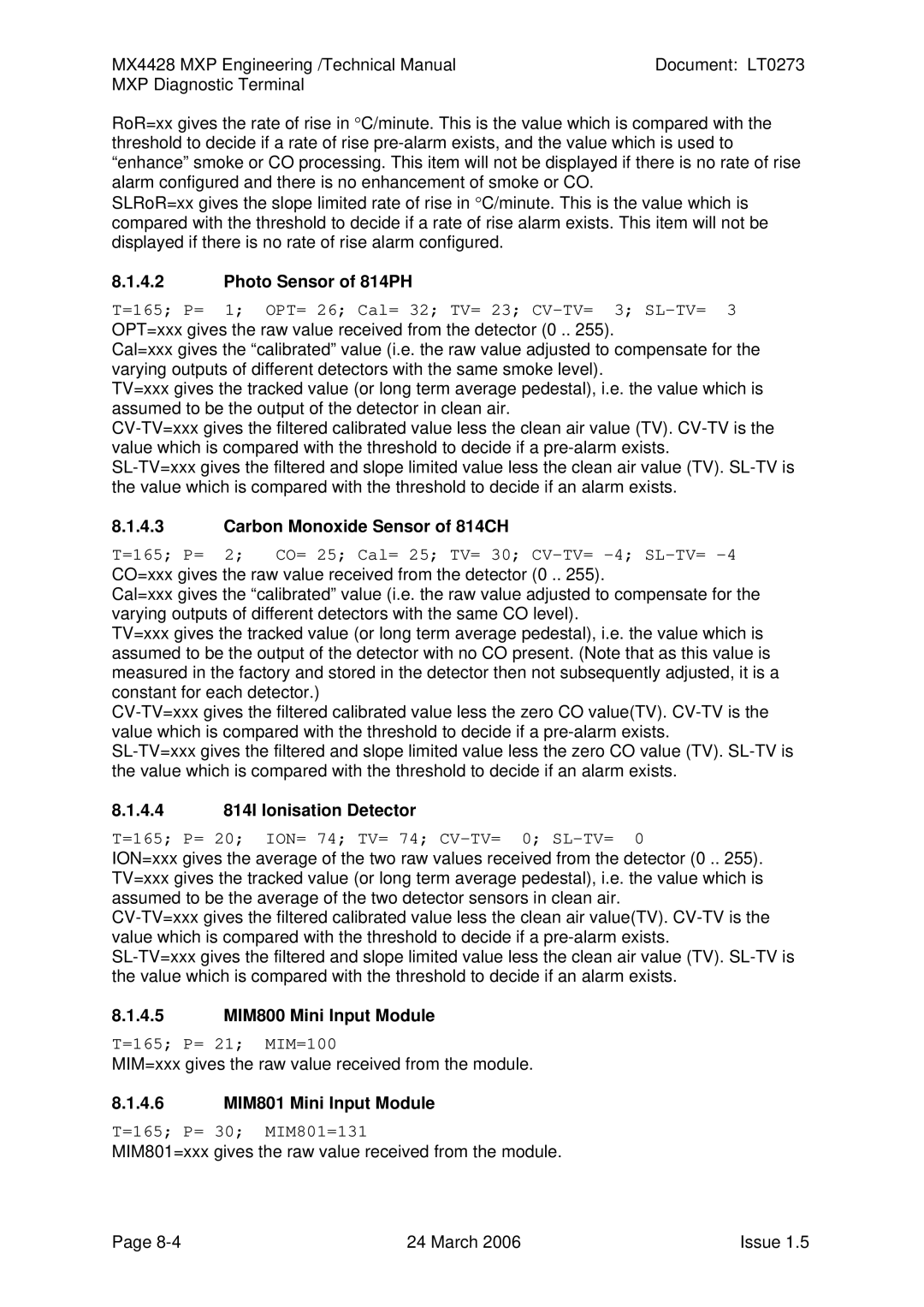MX4428 specifications
The Tyco MX4428 is a cutting-edge device known for its robust performance in the realm of wireless communication and sensor acquisition. Tailored for applications in various sectors, the MX4428 is particularly well-suited for industrial automation, environmental monitoring, and smart city initiatives. With its advanced features, the device has gained tremendous popularity among engineers and developers looking for reliability and efficiency in data transmission.One of the standout features of the MX4428 is its exceptional range, which can extend up to several kilometers under optimal conditions. This long-range capability ensures that data can be transmitted over vast distances without degradation in quality, making it ideal for remote monitoring applications. Additionally, the device operates on multiple frequency bands, providing flexibility in deployment based on specific regional requirements and regulatory guidelines.
The MX4428 utilizes a highly efficient radio protocol that enhances data throughput while reducing power consumption. This asymmetric data transmission method allows for low-duty cycle operation, extending battery life and autonomy. The device's energy efficiency is particularly beneficial in applications where frequent battery replacement would be impractical, such as in environmental sensors and agricultural monitoring systems.
Furthermore, the MX4428 is equipped with comprehensive sensor integration capabilities. It can seamlessly interface with various sensors, making it a versatile choice for collecting a wide range of data types. From temperature and humidity sensors to motion detectors, the MX4428 can serve as a central hub for data gathering and transmission, providing real-time insights into environmental conditions.
Security is also a paramount consideration in the design of the MX4428. It incorporates robust encryption and authentication protocols to safeguard data integrity during transmission. This feature is crucial for applications involving sensitive information or those that require compliance with strict regulatory frameworks.
In summary, the Tyco MX4428 is a powerful and versatile device that boasts a combination of long-range communication, low power consumption, and comprehensive sensor integration capabilities. Its robust security features further enhance its appeal for critical applications across various industries. Whether for industrial, environmental, or smart city use cases, the MX4428 stands out as a reliable solution that meets the demands of modern wireless communication landscapes.
